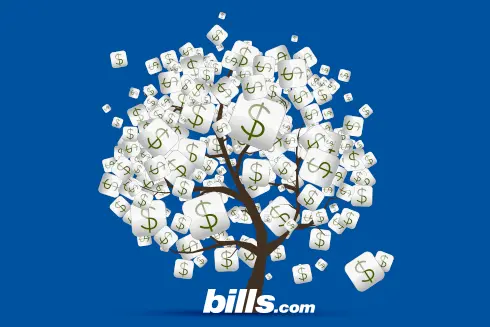Derogatory Item on Credit Report After Chapter 7
We filed bankruptcy 4 years ago and we have one derogatory item that won't come off of our credit.
We filed bankruptcy 4 years ago and we have one derogatory item that won't come off of our credit. We filed a complaint against it years ago. It was I believe for an account we actually filed on, but they entered it onto our credit after the bankruptcy, when in fact it should have been included and marked as such. What can we do to repair this from our report?
We start with a summary of the rules credit reporting agencies must follow, then look at how these rules apply to a bankruptcy.
Fair Credit Reporting Act
Federal law (US Code Title 15, §1681c) controls the behavior of credit reporting agencies (CRAs). The specific law is called the Fair Credit Reporting Act (FCRA). Under FCRA §605 (a) and (b), an account in collection will appear on a consumer’s credit report for up to 7½ years. To determine when an account will be removed by the CRAs (TransUnion, Equifax, and Experian and others), add 7 years to the date of first delinquency. The date of first delinquency is shown in credit reports. Subsequent activity, such as resolving the debt or one debt collector selling the debt to another collector, is irrelevant to the 7-year rule.
Some debts have a reporting period longer than 7 years, including:
- Tax liens: 10 years if unpaid, or 7 years from the payment date
- Bankruptcy: 10 years from the date of filing (15 U.S.C. §1681c)
- Perkins student loans: Until paid in full (20 U.S.C. §1087cc(c)(3))
- Direct and FFEL loans: 7 years from default or rehabilitation date (20 U.S.C. §1080a(f)(1) and 20 U.S.C. §1087e(a)(1))
- Judgments: 7 years or the debtor’s state statute of limitations on judgments, whichever is longer
The FCRA 7-year rule is separate from state statutes of limitations for debt issues.
Bankruptcy & Credit Reports
Generally speaking, any account included in a bankruptcy filing will appear on a credit report as "included in bankruptcy," and reflect a $0 balance. It should not appear as open and past due, though previous delinquencies may remain even after a bankruptcy filing.
Correcting a Credit Report
To correct any problems you are experiencing with your credit profile, you should first pull a copy of your credit report from each of the three major credit bureaus (Equifax, TransUnion, and Experian), then carefully review the reports to identify which discharged accounts are being reported inaccurately. You can access free copies of your credit reports at AnnualCreditReport.com, a Web site sponsored by the credit bureaus in compliance with federal law allowing all consumers to obtain a free copy of each bureau’s credit report once every 12 months. Next, you should dispute the incorrect listings with the credit bureaus. See the Federal Trade Commission document FTC Facts for Consumers: How to Dispute Credit Report Errors for more information.
When disputing an account discharged in bankruptcy, include a copy of your credit report showing the inaccurate listing, as well as a copy of your creditor schedules from your bankruptcy filing and the order of discharge from the bankruptcy court. These documents will show that the same account appearing on your report as delinquent was actually discharged in your bankruptcy filing. Once the credit bureaus receive your dispute letter, they should forward the documents to the creditors in question so the creditors can either challenge the disputes or correct the inaccurate listings.
If the debts were discharged in bankruptcy, there is no reason that the accounts should not be updated to reflect an accurate status. Having these accounts correctly listed on a credit report should reduce their negative impact on a credit score, helping the consumer rebuild their credit after the bankruptcy filing. Although accounts being discharged in bankruptcy is not good for a credit score, having both a bankruptcy and delinquent balances on a credit report is usually worse.
Credit reports are often inaccurate, so it is important to review your credit profile regularly to verify all of the information being reported by creditors is accurate. Carefully monitoring your credit history and disputing inaccurate items can significantly increase your credit score, which could save you thousands of dollars in interest on a mortgage, auto loans, and other forms of credit. If you would like to learn more about credit scoring and credit reports, I encourage you to visit the credit solutions section of Bills.com.
I hope this information helps you Find. Learn. Save.
Best,
Bill
Did you know?
If you are struggling with debt, you are not alone. According to the NY Federal Reserve total household debt as of Quarter Q4 2023 was $17.503 trillion. Student loan debt was $1.601 trillion and credit card debt was $1.129 trillion.
According to data gathered by Urban.org from a sample of credit reports, about 26% of people in the US have some kind of debt in collections. The median debt in collections is $1,739. Student loans and auto loans are common types of debt. Of people holding student debt, approximately 8% had student loans in collections. The national Auto/Retail debt delinquency rate was 4%.
Each state has its rate of delinquency and share of debts in collections. For example, in Arkansas credit card delinquency rate was 5%, and the median credit card debt was $407.
Avoiding collections isn’t always possible. A sudden loss of employment, death in the family, or sickness can lead to financial hardship. Fortunately, there are many ways to deal with debt including an aggressive payment plan, debt consolidation loan, or a negotiated settlement.
